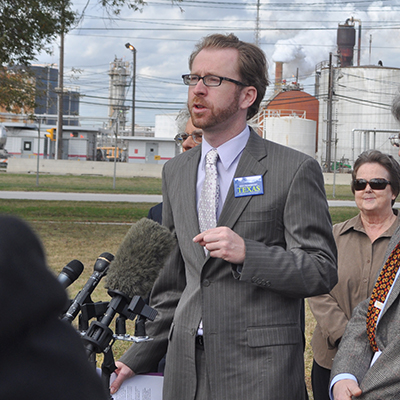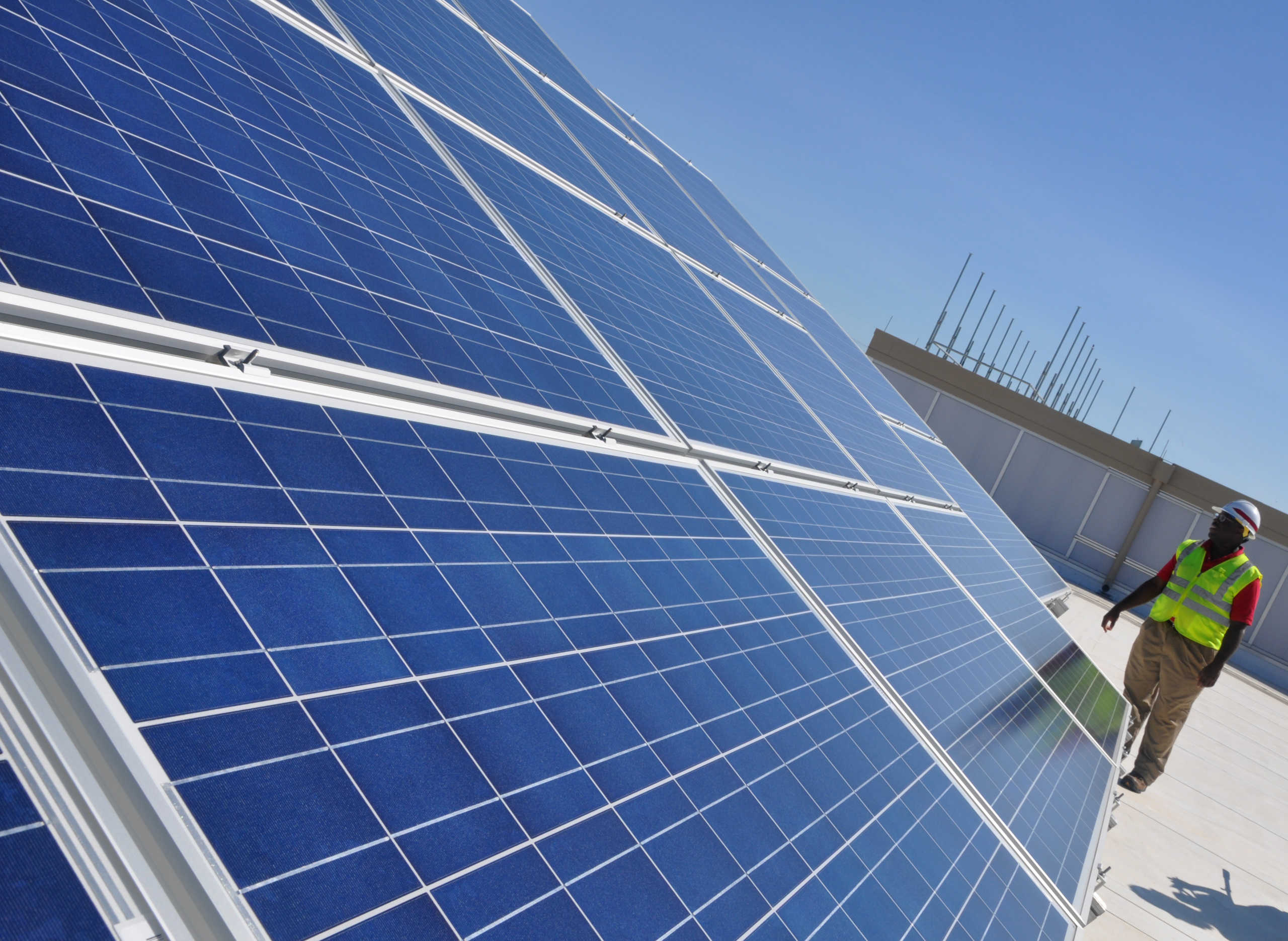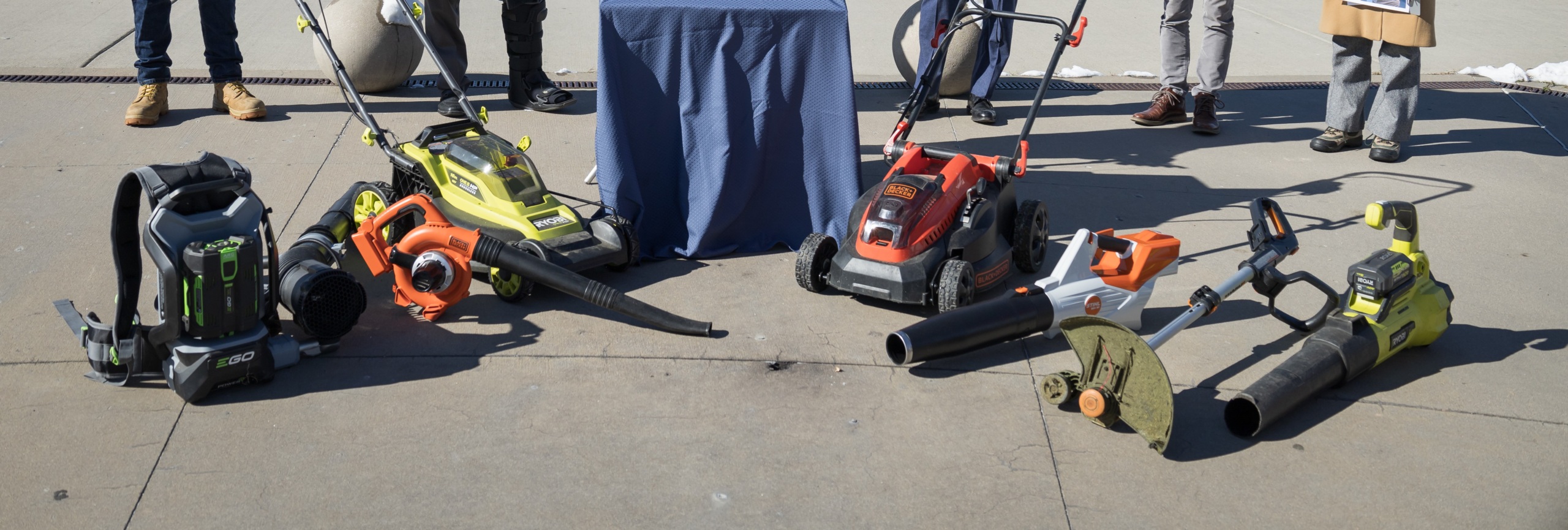
Are biofuels the right climate solution for Texas?
The EPA just mandated more biofuels, that could be bad news for our health and the climate.
To avoid the worst impacts of global warming, we must get off of fossil fuels. But are biofuels the answer?
Not all biofuels are created equally. The worst biofuels are those that require mass cultivation of corn and soy, or that contribute to deforestation. The best ones are ones that use waste products without encouraging unsustainable practices (cooking grease, etc.) The problem is that the latter category is both small in volume and hard to define.
Last week, the U.S. Environmental Protection Agency increased the amount of biofuels that oil refiners must blend into gasoline over the next three years. Long marketed as a source of green energy, research shows the impact of corn ethanol and soy biodiesel on the environment is actually a net negative.
As Michael Grunwald recently wrote in the New York Times, biofuels “increase greenhouse gas emissions through the conversion of carbon-rich forests, wetlands, and grasslands into farmland, expanding our agricultural footprint while shrinking nature’s. That was tragic back when biofuels seemed like the only plausible alternative to planet-broiling gasoline, but it’s inexcusable now that electric vehicles have become better, cleaner, and more economical.” Ethanol is blended into gasoline as a way to reduce smog, but in fact, it may worsen air quality.
Iowa is well known as the capital of biofuels and, as the historic home of the first presidential nominating contest, has made support for ethanol and biodiesel a condition of winning the support of the state’s influential corn and soy farmers and biofuel refiners (although Sen.Ted Cruz won the 2016 Iowa caucus even as he opposed biofuel mandates). So where is Texas when it comes to biofuels? Unfortunately, we’re both a top producer and consumer of this unhelpful alternative to gas and diesel.
Biodiesel
Biodiesel, made by mixing vegetable oils and animal fats with alcohol, can be blended with regular diesel or used on its own in diesel engines. With three biodiesel plants producing approximately 300 million gallons annually, Texas is the second-largest biodiesel-producing state in the country. In 2018 alone, Texas produced 226.8 million gallons of biodiesel, representing 17% of the nation’s total. RBF Port Neches LLC’s biodiesel facility in Houston has the largest production capacity in the nation at 144 million gallons per year. Texas is the largest consumer of biodiesel, consuming nearly 336 million gallons in 2018. Even Willie Nelson was in on biodiesel for a while, but his “BioWillie” went under in 2011.
Ethanol
Ethanol, an alcohol fuel made from corn through fermentation or chemical processes, is most often blended with gasoline at a 10%/90% split (hence the name, E10, you’ll see on gas pumps). The blend with 85% ethanol if marketed as E85. Texas ranks 11th in nameplate capacity and operating production in 2018, reaching 420 million gallons per year from 4 ethanol fuel plants today. According to the Texas Corn Producers Board, “nearly all of the corn used to create ethanol in Texas is actually railed in from other states.”
Texas support for biofuels
Texas mandates alternative vehicle use in government fleets, requiring covered state agency fleets to “consist of at least 50% of vehicles that [can] operate on alternative fuels and use these fuels at least 80% of the time the vehicles are driven.” According to the State of the Fleet Report, the state fleet comprises a total of 12,951 vehicles, out of which 4,087 vehicles are capable of using recognized alternative fuels (including 22 electric vehicles). In the most recent fiscal year, Texas spent more than $685,000 on ethanol and biodiesel for state vehicles (less than 3% of the total spent on fuel).
Additionally, the state provides various biodiesel-related incentives, including funding for biofuel fueling stations and exempting the biodiesel or ethanol portion of blended fuel with taxable diesel from the diesel fuel tax.
“Advanced” biofuels
Advanced biofuels are “generally derived from non-food-based feedstocks and yield a lifecycle reduction in greenhouse gas emissions of at least 50% compared with fossil fuels.” However, so-called “third-generation biofuels do not represent a feasible option at present state of development as their GHG emissions are higher than those from fossil fuels.”
For example, algae has long been seen as a promising source for biofuels, but they still use more energy than the fuels can produce, “so barring a major tech breakthrough, they likely aren’t the climate hero some had hoped.”
Converting plastic waste into fuel is also not the answer. According to U.S. PIRG, “since almost all plastic is made from oil or methane gas, fuels produced by plastic-to-fuel processes are still fossil fuels and therefore release greenhouse gases when burned.”
Other options may have some promise.
Last year, Governor Abbott announced that “USA BioEnergy, through its subsidiary Texas Renewable Funds (TRF), will build a new $1.7 billion advanced biorefinery in Bon Wier, Texas.” Rather than use soy or corn as a feedstock, “the biorefinery will convert one million green tons of wood waste into 34 million gallons annually of premium clean burning transportation fuel including Sustainable Aviation Fuel, Renewable Diesel, and Renewable Naphtha…the plant will also capture and sequester approximately 50 million metric tons of CO2 over the life of the biorefinery.” However, there is again debate about the carbon benefits of using wood waste for a biofuel and concerns it may contribute to deforestation.
Chevron and researchers at Texas A&M AgriLife Extension Service are looking into use of peanuts as a source for biodiesel, claiming it has a lower carbon intensity. Scientists are even looking into converting waste from whiskey distilleries into biofuel!
So if not biofuels, then what?
As the Frontier Group’s Tony Dutzik tweeted, “there is likely room for *some* biofuels in a zero-carbon energy system. But not much and only those that are sustainable over their entire life cycle.”
Fortunately, we now have a viable alternative for fueling most of the transportation sector – electricity. Already more than 200,000 Texans drive electric vehicles. And with new federal tax credits for EVs, the range and variety of EVs growing bigger and bigger, and most automakers pledging to only manufacture electric vehicles, those numbers will skyrocket in the coming years.
Meanwhile, if done right, hydrogen produced by renewable energy is a potential solution for hard-to-electrify areas of the economy such as steel production, shipping and air travel.
Topics
Authors
Luke Metzger
Executive Director, Environment Texas
As the executive director of Environment Texas, Luke is a leading voice in the state for clean air and water, parks and wildlife, and a livable climate. Luke recently led the successful campaign to get the Texas Legislature and voters to invest $1 billion to buy land for new state parks. He also helped win permanent protection for the Christmas Mountains of Big Bend; helped compel Exxon, Shell and Chevron Phillips to cut air pollution at four Texas refineries and chemical plants; and got the Austin and Houston school districts to install filters on water fountains to protect children from lead in drinking water. The San Antonio Current has called Luke "long one of the most energetic and dedicated defenders of environmental issues in the state." He has been named one of the "Top Lobbyists for Causes" by Capitol Inside, received the President's Award from the Texas Recreation and Parks Society for his work to protect Texas parks. He is a board member of the Clean Air Force of Central Texas and an advisory board member of the Texas Tech University Masters of Public Administration program. Luke, his wife, son and daughters are working to visit every state park in Texas.
Darius Hajibashi
Intern
Find Out More

Bank of America said it would stop financing drilling in the Arctic Refuge. Now it’s backtracking.

Unlocking America’s rooftop solar potential

We brought FedEx’s golden solar opportunity to their doorstep



